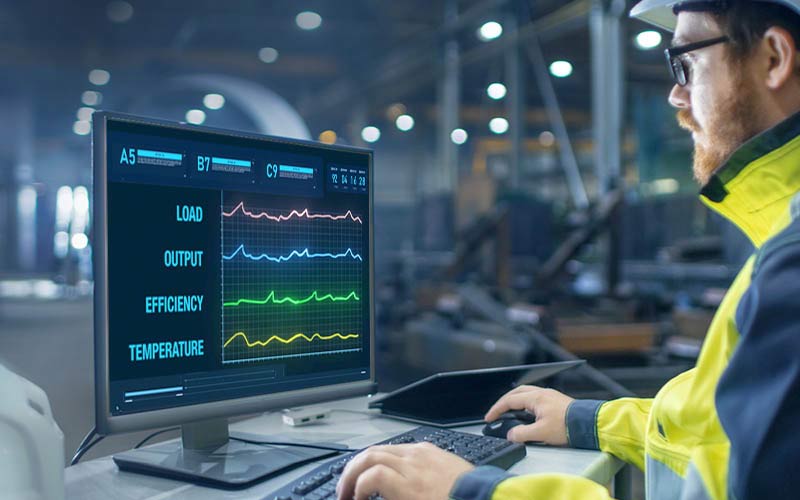SSZT281 july 2020 TMCS1100 , TMCS1101
From autonomous vehicles to aircraft to factory floors, electrification and automation advancements are rapidly transforming our world. Systems that were previously manual, mechanical or hybrid are moving toward full automation and electrification thanks to increases in performance and reliability, and lower total lifetime cost. In fact, we are in the middle of the fourth industrial revolution focused on automation and smarter monitoring, also known as Industry 4.0. With the electrification revolution in full swing, high-voltage systems are becoming more prominent to enable higher efficiency and performance.
In systems that incorporate high-voltage domains, signal and power isolation can help protect people and critical circuits from high-voltage AC or DC power sources and loads. As systems are incorporating more electrical functionality, there are efforts to further shrink these systems to scale. This creates challenges related to the incorporation of increasingly dense form factors and pressure to achieve lower costs and design simplicity, while also maintaining high performance.
Current sensing is commonly used for overcurrent protection, monitoring and diagnostics, and closed-loop control in high-voltage systems, which often requires high accuracy for monitoring and controlling loads to maximize efficiency. Power factor correction circuits, for example, require the accurate sensing of AC currents in order to improve system efficiency as well as to monitor energy consumption. High-voltage motors also require precise in-line motor current sensing for accurate torque control of the motor. With many requirements depending on the specifics of each system, this article will focus on how to select the right current sensing technology for your high-voltage application.
Your three main options for measuring current in high-voltage applications are to use an isolated shunt-based current sensor, a closed-loop Hall-effect current sensor or an in-package Hall-effect current sensor.
As shown in Table 1, isolated shunt-based and closed-loop Hall-effect current sensors provide the highest levels of accuracy and isolation, but they’re more expensive and larger than in-package Hall-effect current sensors. So if ultra-high accuracy is your most important consideration, either of these approaches should meet your need.
If size and cost are critical to your design, in-package Hall-effect current sensors may be your best option. As explained in Table 1, they can enable high-voltage isolated measurements in a simple, small form factor that requires no external components, but they have historically drifted over time and temperature, which limits their accuracy.
We’ve solved this problem with the award-winning TMCS1100 zero-drift Hall-effect current sensor – the industry’s first in-package Hall-effect current sensor to eliminate this tradeoff. Its zero-drift architecture, real-time sensitivity compensation and reliable 3-kV isolation deliver consistent, accurate measurements over time and temperature in high-voltage systems.
| Isolated shunt-based current sensors | Closed-loop Hall-effect current sensors | In-package Hall-effect current sensors | ||
|---|---|---|---|---|
| Existing devices | TMCS1100 | |||
| Solution size | – | – – | + + | + + |
| External components needed | 1 to 3 | 2 to 5 | 0 | 0 |
| Solution cost | – | – – | + + | + + |
| Accuracy | + + | + + | – | + |
| Offset and sensitivity drift | + + | + + + | – – | + |
| Insulation Lifetime | + + | + + | – | + |
The TMCS1100 provides <1% total error current measurement, and its zero-drift precision signal chain-architecture improves drift over temperature and eliminates the need for multi-point calibration. Additionally, the accuracy enables higher efficiency in systems for more accurate control, while minimizing complexity for any application that needs high-precision isolated current measurements, as shown in Figure 1. Further, the TMCS1100 provides a 600-V basic working isolation and 3-kV dielectric isolation between the current path and circuitry.
 Figure 1 The TMCS1100 Enables
Consistent, Precise Measurements over Time and Temperature
Figure 1 The TMCS1100 Enables
Consistent, Precise Measurements over Time and TemperatureYou can learn more about the advantages provided by this approach to magnetic-based current sensing, which include higher accuracy, lower drift and reliable 3-kV isolation, in the white paper, “Improving Performance in High-Voltage Systems with Zero-Drift Hall-Effect Current Sensing.”
Additional Resources
- Read these application reports:
- Learn about the TMCS1100 current sensor.
- Check out other similar devices in the TMCS product family.